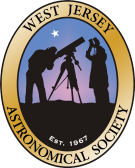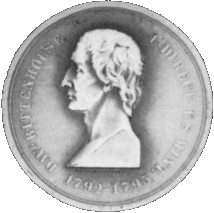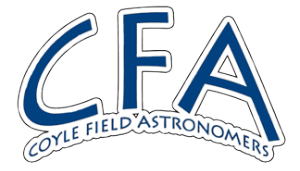Mercury Update - December 2015
Mercury had seven elongations in 2015. The initial sighting for each of these is tabulated below:
|
Sequence |
Initial Sighting Date (2014/15) |
Observing Location |
Greatest Elongation (2015) |
|
#1 |
December 25, 5:00 pm EST | Freedom Park, Medford, NJ |
January 14, eastern (evening) |
|
#2 |
February 11, 5:58 am EST | Old Mart Site, Pennsauken, NJ |
February 24, western (morning) |
|
#3 |
April 21, 8:09 pm EDT | Baseball Fields, Maple Shade, NJ |
May 6, eastern (evening) |
|
#4 |
June 22, 4:53 am EDT | Old Mart Site, Pennsauken, NJ |
June 24, western (morning) |
|
#5 |
August 2, 8:30 pm EDT | Swede Run, Moorestown, NJ |
September 4, eastern (evening) |
|
#6 |
October 11, 5:50 am EDT | Borton Landing Rd, Moorestown, NJ |
October 15, western (morning) |
|
#7 |
December 15, 5:01 pm EST |
Swede Run, Moorestown, NJ |
December 28, eastern (evening) |
The sighting on December 25, 2014 (the first for the 2015 cycle), was accomplished with 16x70 binoculars, assisted by bright Venus about 5° above-left of Mercury, which was in a still-bright, murky-orange sky along the horizon, about 2½° altitude. To ensure a 2015 sighting of this first elongation of 2015, I located Mercury with 10x50 binoculars at 5:10 pm EST on January 1st from the Maple Shade, NJ, baseball field complex. I was then able to spot it naked eye at 5:15 pm when it was at 4½° altitude. The convergence of Mercury and Venus was followed through their close appulse on January 10th (about two-thirds of a degree apart). The first sighting of the second elongation of the year was on February 11th with 16x70 binoculars (but not seen naked eye). Mercury was 2° altitude at the time, and the position was confirmed by sighting nearby Algedi, Alshat and Dabih (Alpha 1 & 2, Nu and Beta Capricorni respectively). It was seen again on February 25th, one day after Greatest Western Elongation, initially with 16x70 binoculars at 5:50 am EST, then five minutes later with unaided eyes.
On April 21st, magnitude -1.2 Mercury was spotted with 10x50 binoculars at 7° altitude and was confirmed by spotting magnitude +1.4 Mars 1.5° away at the 10 o'clock position a minute later. Mercury was spotted again on April 23rd at 8:13 pm EDT with 10x50 binoculars in a patch of clear sky between clouds at 8½° altitude; once located, it was not difficult to see with unaided eyes at magnitude -1.0. Because of the clouds, Mars was not seen 2° below-left of Mercury. On the evenings of April 27, 28 and 29, Mercury was an easy naked-eye object about 45 minutes after sunset, although it dropped from magnitude -0.7 to -0.4 over that three-day span. On June 22nd, magnitude +0.8 Mercury was spotted with 16x70 binoculars at 5° altitude and was confirmed by spotting magnitude +0.9 Aldebaran 2.2° below it, then the Pleiades 11.5° above it. Mercury was not visible naked eye in the relatively bright twilight (civil twilight started at 4:59 am, sunrise was at 5:32 am EDT).
On August 2nd, magnitude -1.0 Mercury was spotted with 16x70 binoculars at 3½° altitude by reference to magnitude -4.2 Venus, which was 11° to the left of, and a couple of degrees lower than Mercury. The slender 6% crescent of Venus was readily apparent in the 16x70s, and the disc of Jupiter was spotted with the binoculars between, and a few degrees higher than a line between Venus and Mercury. None were visible to the unaided eye. On October 11th, magnitude +0.3 Mercury was spotted with 16x70 binoculars at 5:50 am, then with unaided eyes at 5:55 am. It was easily found about 1° from the limb of the earthshine-filled, 2% illuminated crescent moon. It could still be seen with unaided eyes at 6:30 am. Mercury was spotted again on October 18th at 5:50 am without optical aid. It had brightened to magnitude -0.7. It was still easy with unaided eyes at 6:40 am in relatively bright twilight (sunrise at 7:13 am).On December 15th, magnitude -0.6 Mercury was spotted with 16x70 binoculars at 5:01 pm, when it was at 4½° altitude. I took out my 10x50 binoculars at 5:10 pm and spotted it right away, then at 5:14 pm when it was at 2⅝° altitude, I glimpsed it with some difficulty using unaided eyes. The main reference for locating Mercury was the altitude and azimuth reported by SkySafari on my smartphone as there was no moon, bright star or planet nearby. Mercury is still accessible for this elongation at the end of December 2015 and the beginning of January 2016; see this Sky & Telescope online article.
Encouraged by the Sky & Telescope article at the link above, and very clear skies during a cold snap, I looked for Mercury on the evening of January 5, 2016, at Swede Run in Moorestown, NJ. I first spotted it at 5:15 pm EST with 10x50 binoculars when it was about 8° altitude, then saw it with unaided eyes at 5:21 pm. Besides its familiar appearance and diagonal motion as it descended, I used Mercury as a benchmark to find Algedi (the optical double, Alpha 1 & 2 Capricorni) and Dabih (Beta Capricorni) with the binoculars at 5:26 pm. Those stars were in the expected positions, about 7° and 5° above-right of Mercury. So, sightings for the series of 2015 elongations were recorded in three calendar years, from December 25, 2014 through January 5, 2016.
At the end of 2015, the sighting streak is 32 elongations in a row, starting in January 2011, which makes five complete calendar years (click here for previous sightings).
Venus, the Crescent Moon and a
Comet
December 7, 2015
Venus and the Crescent Moon were just 2° apart at 5:48 am EST on December 7, 2015, when this image was captured on a foggy morning from Maple Shade, NJ. Although I could not spot it with 16x70 binoculars a short time earlier, Comet C/2013 US10 (Catalina) does appear faintly in the picture 4½° to the left of Venus (mouseover for labels). Taken with a Canon 6D digital SLR camera (on a fixed tripod) and a Sigma 70 to 300 mm f/4-5.6 APO DG zoom lens set to 214 mm focal length. Exposed 4 seconds at f/5.6, ISO 1600. Color balance is difficult to correct due to the massive array of sodium lights along nearby Main Street.
The picture below is a close-up crop of the comet area from the picture above.
Comet C/2013 US10 (Catalina)
December 5, 2015
After two weeks of frustration waiting for clear skies as it gained some altitude, I finally spotted Comet C/2013 US10 (Catalina) on December 5, 2015, at 5:15 am EST with 16x70 binoculars from Borton Landing Road in Moorestown, NJ. It was actually fairly easy to see the small fuzzy patch with the binoculars, despite a 31% illuminated moon 30° to the west, as it had reached 15° altitude 15 minutes before the onset of astronomical twilight. Current magnitude estimates are generally in the 6.x range. This picture was captured at 5:34 am when the comet was at 18° altitude and 6° below-left of Venus, the bright object near the center (mouseover for labels). Taken with a Canon 6D digital SLR camera (on a fixed tripod) and a Canon 100 mm f/2.8L macro lens. Exposed 3.2 seconds at f/4, ISO 3200.
This is a 24% crop of the preceding picture, magnifying the comet and the area around it (mouseover for label).
Click here for some older images.



